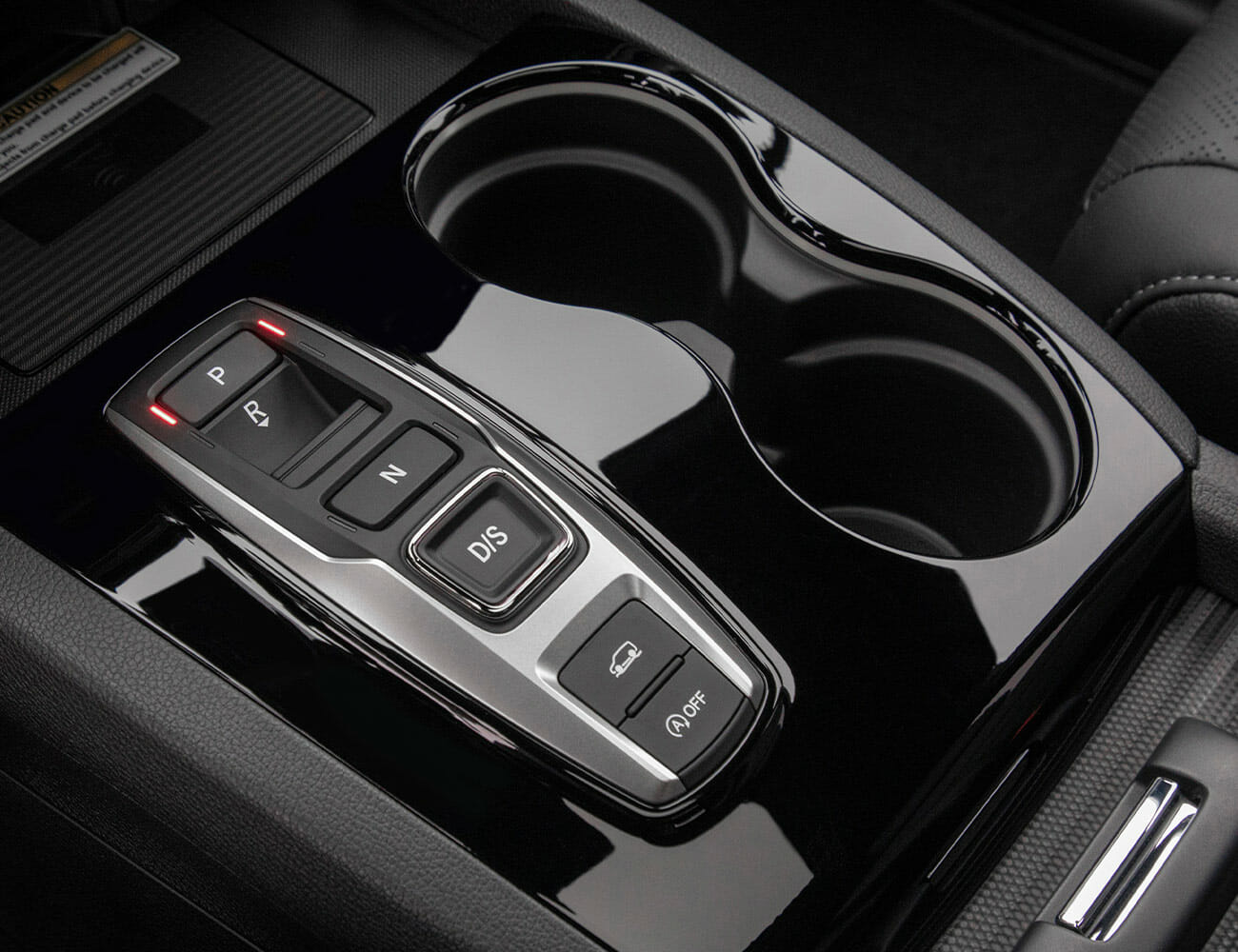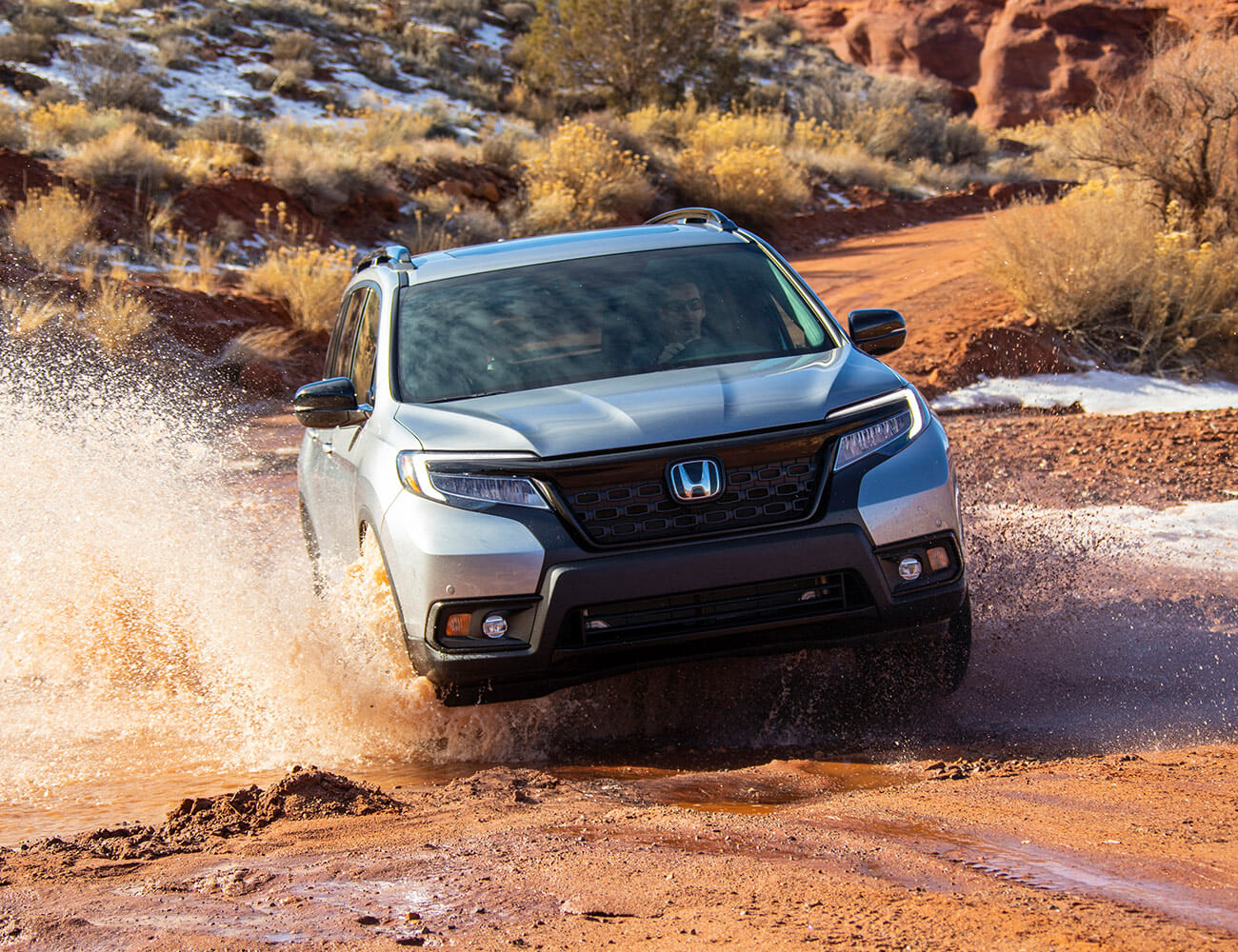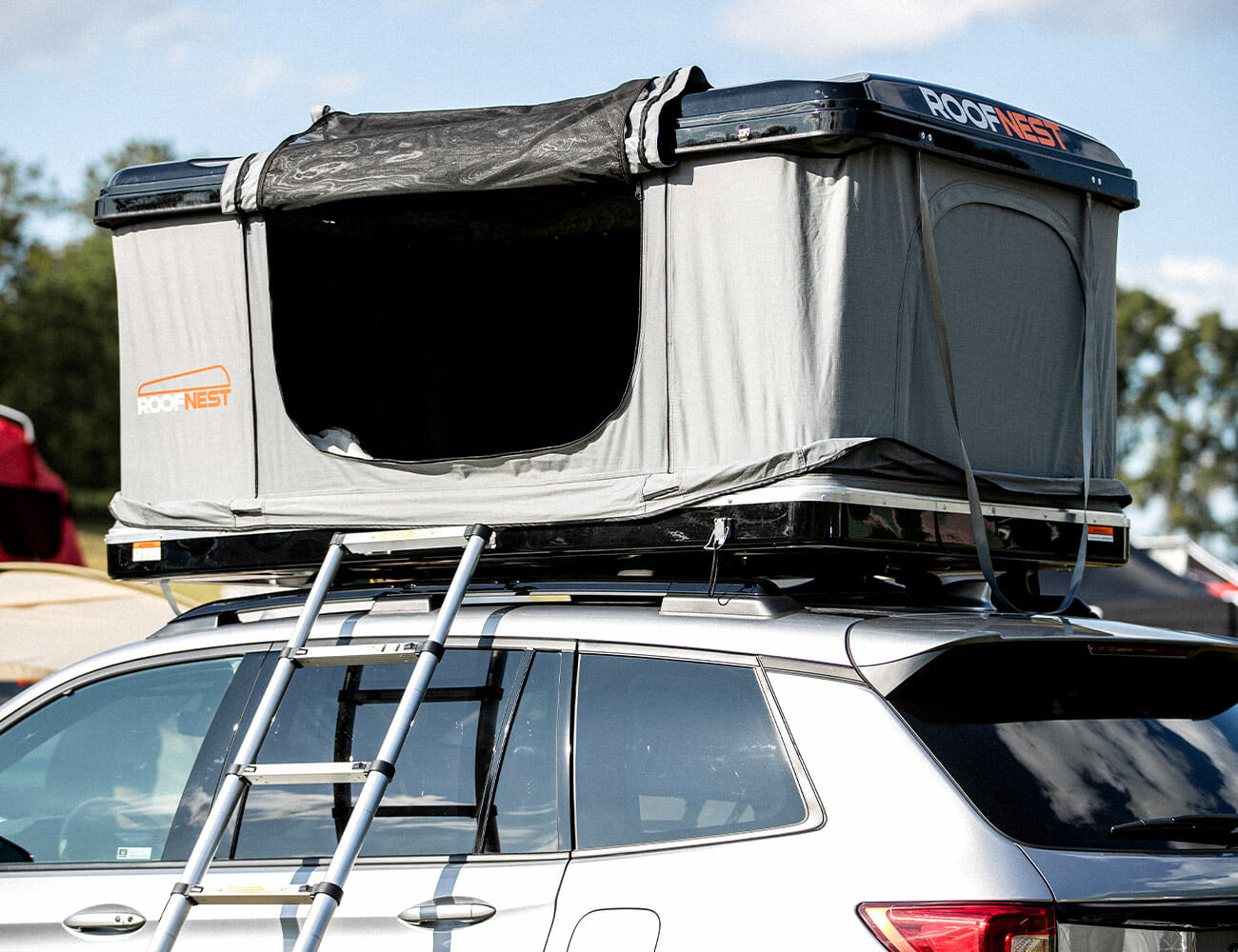Back in August, Gear Patrol consumer marketing manager Caitlyn Shaw needed both a way to drive to the Mid-Atlantic Overland Festival and a place to sleep for a couple nights when she arrived. Luckily, Honda obliged by serving up something along the lines of its own overlanding concept.
When my colleague heard I’d be taking the new Honda Passport to this year’s Mid-Atlantic Overland Festival, he wasn’t convinced it would do the job. The new Passport is Honda’s answer to the increase in consumer demand for vehicles fit for an active outdoor lifestyle — so much so that Honda outfitted the one they sent to us with a rooftop tent called a Roofnest — but it’s still a crossover, not a truck-based traditional SUV like the Land Rover Defender.
A weekend driving the Passport was more than enough proof to me, however, that Honda is serious about moving into the off-road and overlanding space — and combining the Passport with the Roofnest covers all the bases. The combo was ideal for a first-time camper (and solo traveler) like myself; it got me comfortably through Manhattan traffic just as well as it did through dimly-lit country roads to the festival grounds and the trails surrounding it.
In the city, the Passport felt smooth and luxurious. Making calls and listening to podcasts via Bluetooth was significantly easier than doing so in comparable vehicles I’ve ridden in. I was surprised by how much I enjoyed the driver-side armrests, which are a small feature that made being stuck in lower Manhattan traffic a bit more bearable.
On the flipside, I didn’t care for the lack of a proper shifter. The Passport uses a series of buttons instead of a lever; I felt that the button shifters forced me to take my eyes away from the road and my surroundings. While a seemingly small downside, it would be a dealbreaker if I were considering the Passport for everyday use.

Where the Passport shone, though, was where the pavement ended. The route to the festival required driving through rocky roads, up and down hills and through narrow passageways between camping rigs. The best indicator of how smoothly the Passport handled this is the fact that I didn’t think about it at all; I felt just as safe in the pitch-dark hills of western Pennsylvania as I did stuck in NYC traffic or cruising down the highway.
I might even argue that the Passport is better-suited to life off-road than it is for life in the city, where features like lane departure or brake warnings aren’t as helpful as they could be. Situations that are common in the city, like abrupt lane merges and bumper-to-bumper traffic, confuse the car’s sensors; they can make those safety features seem more like distractions than helpful additions.

The Roofnest tent atop the Passport was perhaps the easiest part of the entire experience for this first-time camper. To assemble my rooftop home, all I had to do was pop open the collapsible ladder and latch the top end to the roof, climb up and open a few clips surrounding the tent case. The tent itself was super roomy, with a built-in memory foam mattress, and I slept soundly — even if I was a little cold.
Collapsing the tent was more difficult than putting it up — the company makes clear that it’s supposed to be a two-person job — but I got it done solo, and managed to head away from Overland Fest for a supply run, then come back and reassemble my camp without a hitch.

The marriage between Honda Passport and Roofnest tent may not be one you picture for either product, but it was damn fine for my first weekend of camping and off-roading. With the new Passport, Honda has managed to build a car that made camping for the first time and driving alone across three states feel safe, easy and approachable — and even a tad luxurious.

